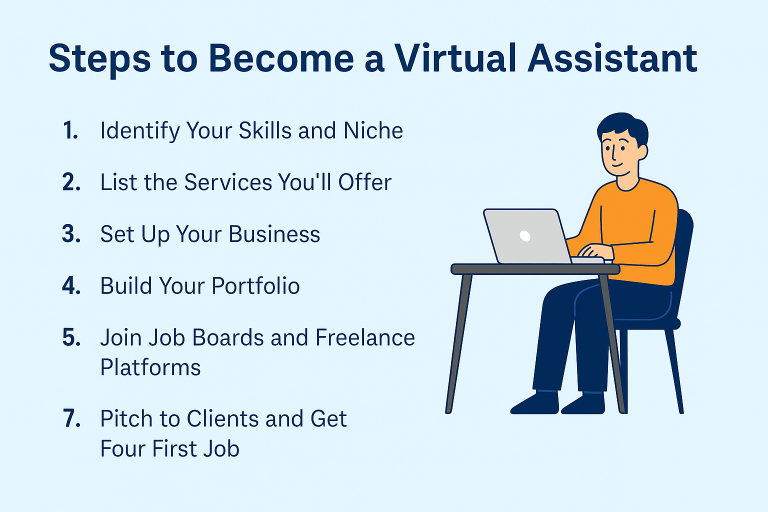E-commerce is basically a way for you to buy or sell products/services online, and you can turn this into a living.
And I will show you how to do it. I will talk about stuff like market research. Getting to know your target market audience, and find the right audience.
Also, how you’re going to fulfill their needs. This can be as simple as online surveys or perhaps a just a skateboard.

Table of Contents
1. Finding Products to Sell
If you want to start an e-commerce business. You must find a product to sell. Like I said before, e-commerce is buying or selling products or services online. So how do you find a product?
First off, what will be your niche? What will your business be all about. When deciding this, think of what you are interested in. Perhaps you like dogs, then sell training programs or maybe dog cages or food. If you have an interest in something else, then create your business around that.
Next, we will be getting into market research. You have to analyze your competition, but also of course the audience or the customers.
When analyzing your competitors, here is what you should look for:
- What are they selling?
- Their audience or customers (what type of people buy their products).
- Look at what they are doing. Advertisement, design, prices, etc.
- What are they missing?
The list can go a bit further, but that is generally what you kinda wanna look at. Of course, look into details. One small thing can make a difference. Especially when looking at what they are missing out on.
If you can notice something that your competitors don’t have, but people want. If you can offer such thing, then you will be ahead of your competitors. Now these things could be just how smooth your e-commerce site is loading, or maybe just navigation, service, etc.
2. Figure Out How to Obtain Your Product
This is pretty overlooked, I don’t see all of these online multi-billionaire TikTok gurus talk about this. So if you think of selling dog food or something. How will you obtain your product?
When it comes to e-commerce or owning a store, you either make or buy products that you sell for a profit. You could import a bunch of dog food for a very affordable price and sell it for a much higher price.
But if that’s the case, you also gotta think of quality! People not only want low prices or good-looking stuff. They want high quality products. I can say that it is hard to find good quality products for a cheap price.
If you got the budget, you could get your own supplier and get your products like that.
3. Find Your Selling Channel/Traffic Source

So you have your product, you know how to find a supplier for your products. Now you got to sell it somehow. Answer me this, how will you sell something if no one sees you? It’s like starting a lemonade stand at a desert.
That would be pretty much impossible for you to make any money at all. So let’s find you a source of traffic or a selling channel. Whatever you wanna call it.
Here are a few suggestions:
- Amazon, Etsy, Chewy, etc.
- Organic traffic (a website ranking in search engines, or social media accounts)
- Advertisement
I’m just gonna break down a bit on each one of them. Firstly, Amazon, Etsy, etc. These websites do allow you to sell your products there. BUT they are going to take a portion of the money, which means less profit.
The second option is organic traffic. This could be you starting a website or a blog (just like this one). And start ranking in search engines. Perhaps a social media account, and promote your product there (most likely a link to a website anyway, so it is a mix of both).
The only downside is TIME. Building a brand or authority without spending a penny to boost your traffic is going to take quite some time. Trust me, this is coming from personal experience.
Thirdly and lastly, advertisement. This is linked to a website or social media too, because you can use Google Ads (paying to be put on page one on Google, aka a lot of traffic). Or paying for maybe a Facebook ad, or what ever platform you chose.
There are some positive sides to this, and that’s mainly faster growth. But it has some flaws to it too. Like risks, and of course you are spending money, could be a risk of a decrease in profit.
If you ant to use ads you have to have a pretty darn good pitch and convince people that what ever you are selling, they want it. And that it’s good.
The choice is yours, if you want to create an e-commerce website I would recommend you using WooCommerce or Shopify. Great starter sites, good designs. I would recommend you learning more on how to use Shopify or WooCommerce before getting started.
4. Create a Name & a Brand
This step is a pretty oblivious one. But it is still important, now you don’t want a goofy or a silly name, well of course that depends on the niche you’re in.
But generally when you create a brand you want a name that kinda sounds professional, but of course it could be a completely made up name like “YouTube” but as long as it sounds good then you are pretty much fine.
By the way that’s a brand name if you come up with something random. There are a different type of brand name and that’s a “keyword name”. Like if you got a e-commerce store and you name is “dogsdreamstore.com” that’s more around the niche.
Also, you want a short name too. This is just personal preference, but honestly if someone finds you on social media for example and want to search up your site or e-commerce store.
Do you think they would be interested in typing out “dogfoodexpertvetproductmaster.com”. Alright sure the name is ridicules. But you get the idea, just come up with your own made up name that you like and sounds good.
Just make sure it’s not to long. It also just looks more professional when it’s short.
By the way, there are business out there that have super long names but is still very popular and successful. But now days everyone needs this fast and lazy/easy way. So having a short name is just something small and not a big deal like that. But I would recommend it.
Create a Logo
This is does kinda relate to the creating a whole personal brand. The logo is a pretty oblivious step to creating a brand and a business. But I just wanna go through what you should think of.
First off, the logo nowadays to look professional should be simple, and not much going on. Like Amazon, it is literally an “A” with a background, and boom a well-known logo everyone can tell.
Okay I kinda lied, it is their icon, because they kinda have a logo which is the iconic “Amazon” with the arrow pointing from A to Z. So you could kinda have 2 versions like them, but I think you can use your icon as your logo. It is possible. No need to overcomplicate things.
But as I said, Your logo should be simple but of course related to your business name and niche.
5. Creating a Strategy & a Plan
When starting any form of business, you need a plan. It’s a must, you can’t skip this part. So when it comes to e-commerce, what are you even supposed to plan or create a whole strategy about?
Here are a few things for you to consider:
- Shipping strategy: What will be your strategy when it comes to shipping out your products to anyone across the entire world? I think Shopify does have it pretty much already set up for you. But I recommend you doing your own research.
- Overall business plan: What I mean by “overall”, I mean stuff like what are you going to sell, what are you going to work with every single day, etc. So like “day one, set up your store, day 2 find your product” etc. Make a plan for what you will do, step by step.
- How & what will you promote your business with: I covered this earlier, but you got to include where you will promote yourself. Do you wanna use organic traffic? Then go out there and research what you are supposed to do to get organic traffic on YouTube or whatever platform you picked.
- Strategize on how you will sell, import, make, etc: You do have to create a strategy for how and what you will sell. Create a strategy/plan for how you will import or make this much of a product and still make a profit, etc.
Your strategies and your plan can determine if you are going to create a successful e-commerce store or not. If your plan is mid or generally bad, like if you haven’t even thought of stuff like shipping that could ruin your business.
That’s just an example, but really take your time, think everything through. Something you don’t know? Do research, search it up, study, take a course, YouTube, or whatever you want. Just make sure everything is ready, and works.
FAQ Section: Starting an E-Commerce Business
Thought I could answer some common questions people tend to ask when starting their e-commerce business.

1. How can I make my e-commerce business successful?
Yes you can make your e-commerce business successful. Just make sure you got a good strategy, a good product, and a good way to promote it.
2. Is E-Commerce profitable?
Yes e-commerce can be profitable. For that to happen you have to be able to import or make your product and sell it for a profit. Of course you need customers for this to work aswelll.
3. What is the easiest way to start an E-Commerce business?
Easiest way to start an e-commerce business is to learn how to start one, then create an strategy/plan and follow it. If you know what you are doing then it automatically becomes easier.
4. What E-Commerce business makes the most money?
The type of e-commerce that has the highest profit margin i stuff like print on demand tends to have a high profit margin. This does depend on your niche. Also digital products have also a pretty high profit magrin.
5. What are 4 types of e-commerce?
E-commerce has 4 types of “e-commerce” and those are:
1. B2C (Business to Consumer)
2. B2B (Business to Business)
3. C2C (Consumer to Consumer)
4. C2B (Consumer to Business)
Each type offers unique pathways to connect, engage, and prosper.
6. Is it hard to do e-commerce?
E-commerce is pretty beginner friendly. It is not hard at all to get started with and get a business up and roling. The hard part is to get customers to find and buy your service or product.
That’s it, Final Thoughts & Tips
This is the end of the article. I just wanna share some final thoughts and some tips before you get started.
With any type of business, it doesn’t matter if it is a store, or an online one. Everything takes time. There are no getting riches in a day businesses. It takes focus, dedication, and discipline.
Also, don’t rush things. If you rush things, there is a good chance you are gonna miss something. There is nothing wrong with learning how to do e-commerce, then working your butt off every day.
What I am saying is, you don’t have to stress it. Most people reading this are probably new to e-commerce, so take your time, learn, research. Then work.
Finally, don’t overthink that much, or make it too complicated. Simple is most of the time better. A simple design, simple logo, simple plan can go a very long way.
If you happened to be intrested in different ways to earn money online. Click on that link and you can read my article on different ways on how you can make money from home.
Just in case e-commerce just wasn’t for you.






